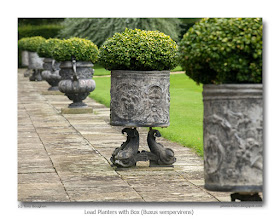 click photo to enlarge
click photo to enlargeIn a couple of blog posts I've commented on the lack of comfort of much public seating, observing that it veers towards either the "artistic" or the "indestructable" (and sometimes both), qualities which rarely do anything for one's posterior. A few days ago I came across a bench that, in my experience, surpassed all others for the torture that it inflicted on my backside. It was made of wood and had no back, but what made it especially painful was the spacing between the "slats". In fact there were only 3 slabs of wood each about 4 inches (10cm) wide. But, presumably for aesthetic reasons, the voids between them measured exactly the same. Thus, it was impossible to position yourself without part of you slipping through the gaps and coming up against the sharp edge of the wood. It made eating my sandwich a much less pleasant experience than I'd have wished!
The location of this bench, should you wish to avoid it, is Fisher Square, Cambridge. This is one of the few determinedly modern squares in Cambridge: elsewhere classical and gothic buildings provide the backdrop. It is tacked on to the shopping centre of Lion Yard, and has been furnished with the usual contemporary trappings - uncomfortable benches (of course), block paving with patterns, solitary "specimen" trees, steel railings, steps, and in the middle the mandatory modern sculpture (with uplighters), in this case an incised granite boulder by Peter Randall-Page called, "Between the Lines". All in all it is as bleak a bit of Britain as you'll find anywhere. It's a fairly recent development but already the sleek lines are being mottled by discarded chewing gum.
However, such locations often provide photographic opportunities, and as I munched on my ham and tomatoes I spotted one that captured my depressed mood. Across the square a man was pacing up and down, animatedly talking into his mobile phone. As he stopped and gesticulated - seeming to want to make his point more forcibly to someone who couldn't see him! - I composed this shot and pressed the shutter. The discomfort coming from my backside, combined with the depressing environment, seemed to converge and produce an image that summed up a dismal aspect of modern life!
Tune in tomorrow for another cheery blog post from the front-line of amateur photography ;-)
photograph & text (c) T. Boughen
Camera: Lumix LX3
Mode: Aperture Priority
Focal Length: 5.1mm (24mm/35mm equiv.)
F No: f2.8
Shutter Speed: 1/400
ISO: 80
Exposure Compensation: -0.66 EV
Image Stabilisation: On





















.jpg)






